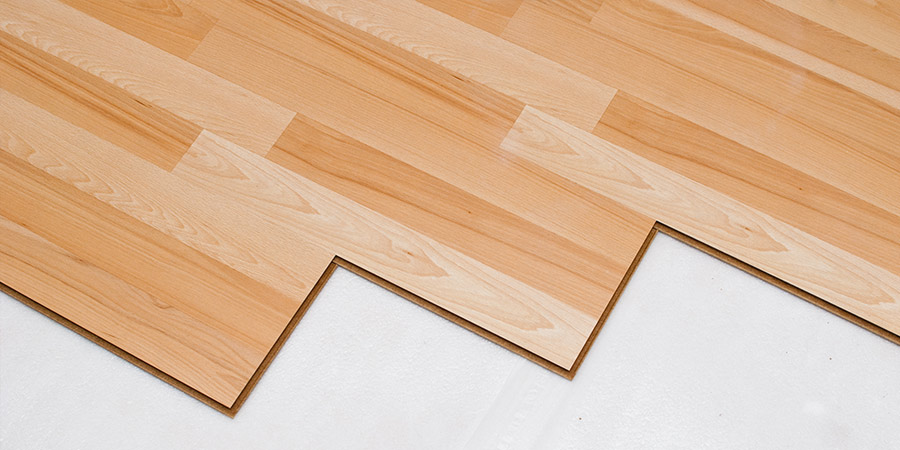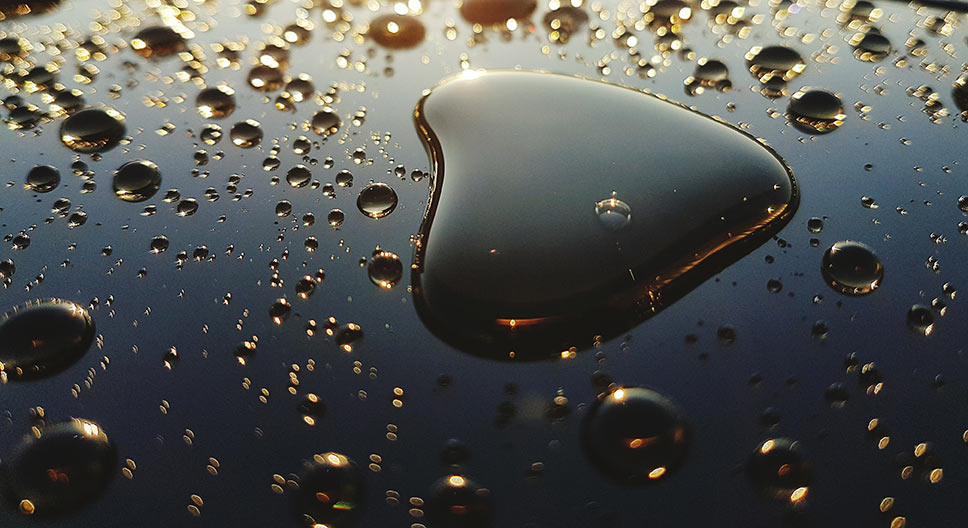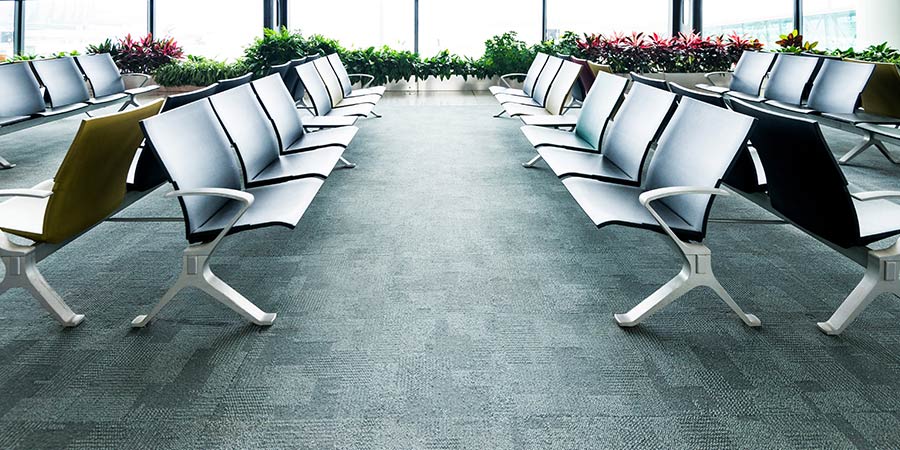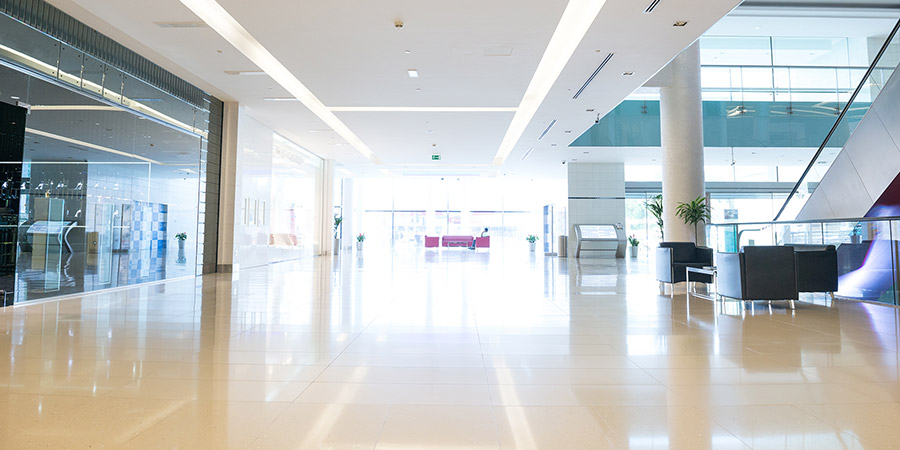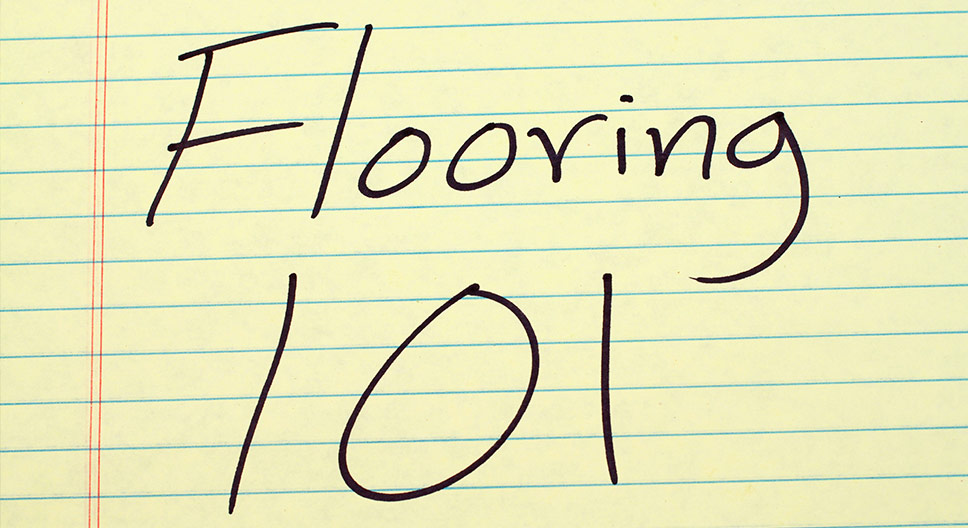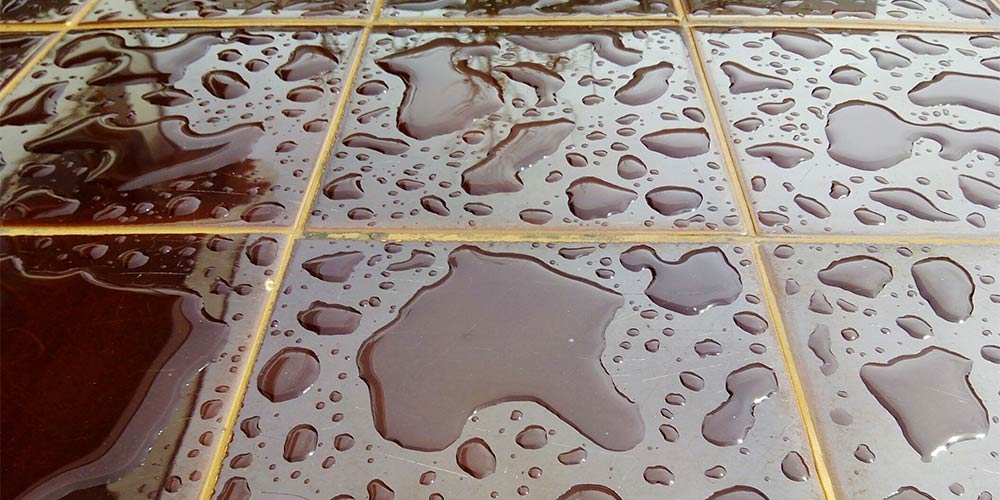
Contents
- Floor moisture barrier warranties
- An increase in moisture-related flooring failures
- Moisture testing for new and replacement floors
- Concrete moisture test methods
- Early moisture mitigation planning
- Moisture mitigation strategies
- Shortfalls of high-performance adhesives
- Ensuring good concrete-to-flooring adhesion
- Choosing flooring
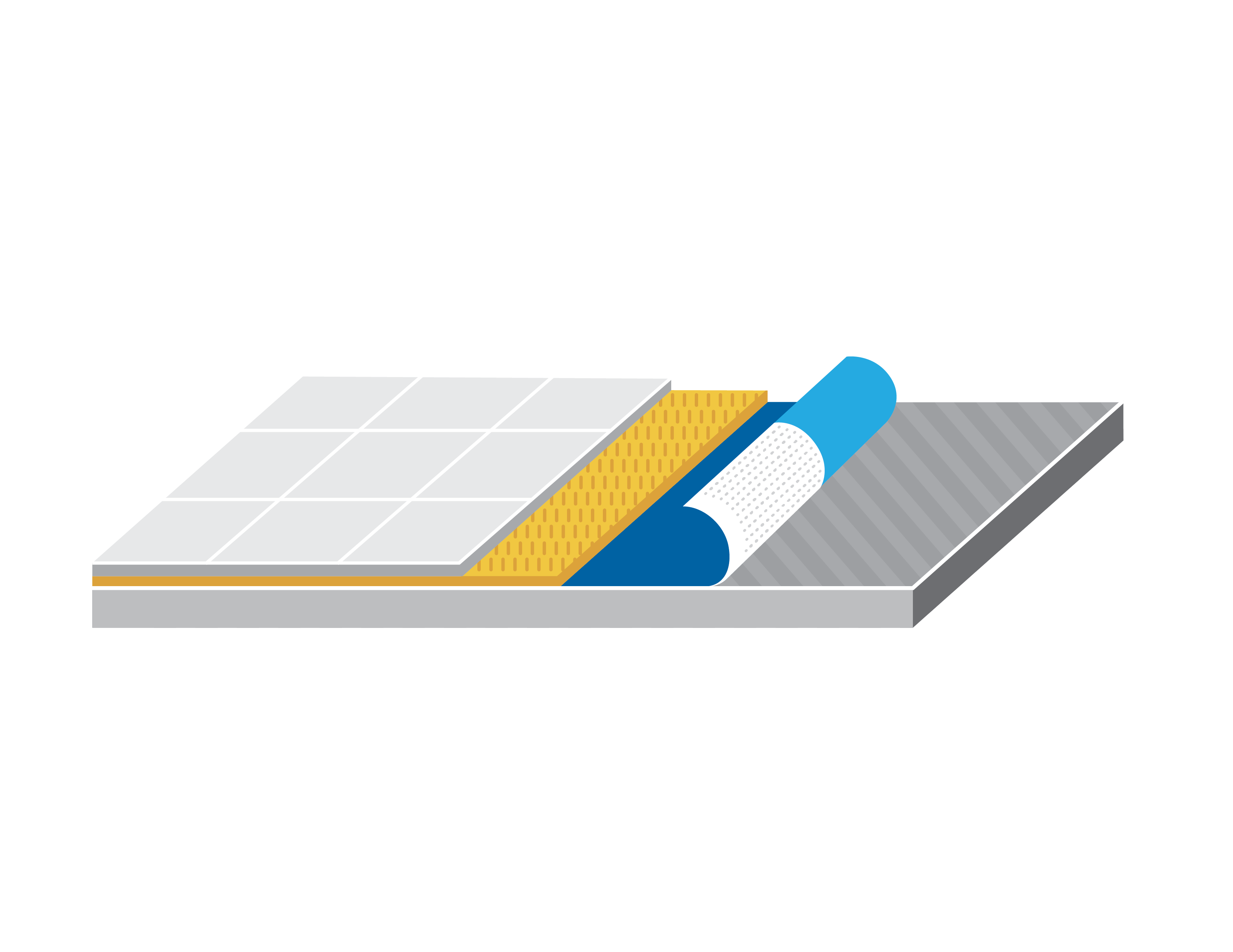
Flooring moisture barrier warranties
Contractors are under pressure to complete projects on ever-shorter schedules with ever-tighter budgets. The imperative to get the job done quickly and efficiently may overshadow the need to fully test concrete slabs to determine whether moisture remediation is called for. Replacing a floor that has been damaged by moisture can cost many times the original installation expense and this risk should be taken seriously. Failing to properly test for moisture may also void the flooring product warranty.
An increase in moisture-related flooring failures
Moisture-related floor failures are becoming more common due to accelerated construction schedules. Over time, this moisture can cause serious deterioration to the flooring, including delamination, discoloration, blisters, re-emulsification of adhesives, mold growth, and odor problems. It is estimated that moisture-related flooring problems cause more than $1 billion annually in the U.S. alone.
Given how common moisture problems are today, flooring contractors should build moisture mitigation into their schedule. That may mean educating the general contractor (GC) about the importance of using a moisture mitigation barrier like the KOVARA® floor moisture barrier to improve the performance and lifespan of the finished floor—and to reducing the GC’s risk of a call-back.
Moisture testing for new and replacement floors
Testing concrete slabs for moisture is a standard requirement today for nearly all new construction, both commercial and residential. But what about existing slabs? When replacing flooring on older buildings, measuring moisture may be even more important than with newly constructed floors.
A moisture barrier installed before the mid-1990s may not be up to the current ASTM standards and may not perform as well as contemporary solutions. In some cases, a simple poly sheet may be all that separates the slab from ground moisture. Over time, a substandard membrane can break down or become perforated, reducing or eliminating its ability to control moisture intrusion.
For these reasons, many experts promote moisture testing with any concrete floor before installing or replacing flooring.
Learn about moisture tests and the KOVARA floor moisture barrier
ASTM F710: Preparing the concrete floor
There are many factors that go into a successful flooring installation project, from selecting an appropriate floor material to a proper installation procedure. But just as important as these—and often overlooked—is careful preparation of the concrete slab. Cutting corners on this critical step can lead to problems down the road that negatively impact the floor’s performance and shorten its lifespan. The ASTM F710 standard provides guidance on the proper steps to prepare concrete slabs to receive resilient flooring.
Concrete moisture test methods
Flooring installers are increasingly aware of the importance of testing concrete slabs for moisture before installing their flooring. This awareness is inspired, in part, by flooring manufacturers that require such testing to qualify for warranty coverage. But what is the best method for performing that testing?
There are two main ASTM standards for testing the relative humidity (RH) of concrete slabs: ASTM F1869 - 16a and ASTM 2170. Before making any testing decisions, make sure to review the flooring manufacturer’s installation instructions and warranty information to see if they require or favor a particular approach.
Early moisture mitigation planning
Achieving a level of relative humidity (RH) in the slab suitable for installing flooring is more challenging than ever, given today’s fast-track project schedules. New concrete slabs may not be given time to dry fully before applying flooring. Renovation projects present their own challenges, with moisture intrusion common in older buildings.
Unfortunately, general contractors don’t always take this into account, when preparing bids or developing their project schedules. Then, when a moisture issue emerges during construction, the flooring contractor is often placed in the awkward position of informing the GC that mitigation is required—delaying the project and incurring additional costs. The flooring contractor is often under pressure to find a cost-effective solution….fast.
This unpleasant reality can be avoided with a “top down” approach to moisture mitigation planning. Flooring contractors should address the issue of moisture mitigation with the GC right from the start. Addressing the reality of slab moisture mitigation up front can help avoid project delays, unforeseen costs and a lot of headaches. When the RH or alkalinity in the concrete is too high, it is necessary to invest in floor moisture barriers to protect against costly flooring failures. That benefits everyone: the flooring contractor, the general contractor, the building owner, and, ultimately, the building’s occupants.
Which moisture mitigation strategy?
Excess moisture in concrete slabs is a common issue, whether working on new construction or renovation. In new construction, accelerated project schedules may not allow time for the slab to fully dry—a process that can take several months. In renovation projects, older slabs may not have adequate waterproofing or the floor moisture barrier may have become compromised over time. Whatever the reason, mitigating the problem before installing finished flooring is critical to avoid a costly failure. But what mitigation approach is right? The answer may depend on your specific project circumstances.
Before choosing which floor moisture barrier to use, consider some important questions. How high are moisture levels in the slab? Does your contract expose you to potential liability for moisture damage—and, if so, for how many years? Could releasing potentially hazardous materials impact workers or, in the case of renovation projects, building occupants? Is speed of application a priority?
The answers to these questions will help guide you to a moisture mitigation strategy that protects you, the building owner, and the building occupants for many years to come.
Have questions about concrete floor moisture mitigation or which KOVARA® floor moisture barrier is the best option for your project? Get in touch with a flooring specialist at GCP Applied Technologies.
Shortfalls of high-performance adhesives
When flooring budgets are tight, contractors often look for ways to keep installation costs down. For projects where high moisture in the concrete slab is an issue, installers may automatically turn to one of the lower-cost “high-performance” adhesives on the market rather than using a rolled moisture mitigation solution, such as the KOVARA® floor moisture barrier, which was specifically designed for moisture mitigation.
At first glance, a high-performance adhesive may seem like a cost-effective solution for all projects. Some of these products claim to have moisture control properties, so it’s like getting two products—flooring adhesive and floor moisture barrier—in one. But in some cases, that “high-performance” product may not perform as expected.
A key cause of adhesive failure is alkalinity. When moisture is highly alkaline, it can degrade most water-based adhesives. If the adhesive is not specifically designed for high-alkalinity environments, it can re-emulsify. When this occurs, the product cannot effectively provide adhesion or moisture control. At that point, the flooring itself can fall victim to the ravages of moisture and alkalinity.
Ensuring good concrete-to-flooring adhesion
For flooring that is adhered to a concrete slab, achieving and maintaining a secure bond is essential for long flooring life and satisfactory performance. There are multiple factors that can compromise adhesion and shorten the flooring product’s lifespan, potentially leading to costly flooring repairs or even replacement. Learn how to ensure a long-lasting bond between the concrete and flooring with the KOVARA floor moisture barrier.
Flooring for retail environments
In today’s retail environments, floors aren’t just a surface to walk on…they play a key role in helping create a positive customer experience. In fact, choosing the right floor is just as important as choosing the right lighting or merchandising design. It's also helpful to test the underlying concrete slab to ensure it doesn't have excess moisture that can damage the floor. If so, applying a moisture mitigation solution like a KOVARA® floor moisture barrier will help protect against costly flooring failures.
Here are some best practices to keep in mind when selecting flooring for retail establishments—and where floor moisture barriers come into play.
Flooring for healthcare facilities
Floors play a critical, yet often overlooked, role in the daily activity of today’s busy healthcare organizations. To help ensure the safety of patients, it is necessary to conduct a moisture test on the concrete slab that flooring will be placed on top of. Excess moisture or relative humidity in the slab can cause moisture to flow through to the flooring, causing flooring failures. If this is the case, using a moisture mitigation solution such as the KOVARA® floor moisture barriers can prevent these costly problems. Your decisions about flooring and floor moisture barriers support the mission of patient care. Consider the following best practices.
Flooring for educational facilities
The physical environment of a school can have a significant impact on the performance and experience of both students and staff. Flooring plays a key role in that equation. In addition to the selection of flooring, it is important to make sure that the concrete slab underneath the flooring is in the proper condition. This includes testing to make sure there is not excess moisture or relative humidity in the slab that could damage the flooring. If there is excess moisture or relative humidity, a moisture mitigation solution such as KOVARA® floor moisture barrier will be needed to prevent this damage.
When selecting flooring materials, including a floor moisture barrier, consider the following best practices.
Flooring for hospitality projects
For hotels and resorts, creating a relaxing and positive guest experience is the name of the game. Achieving that goal requires careful attention to every detail — from the lighting and décor to the towels. Flooring and floor moisture barriers also plays a critical role in the guest experience. Moisture mitigation solutions like the KOVARA® floor moisture barrier are necessary if there is too much moisture or relative humidity in the concrete slab beneath it. This will help protect against costly and disruptive flooring failures. When selecting flooring for a hospitality project, consider the following best practices.
Tags
- Flooring
- KOVARA
